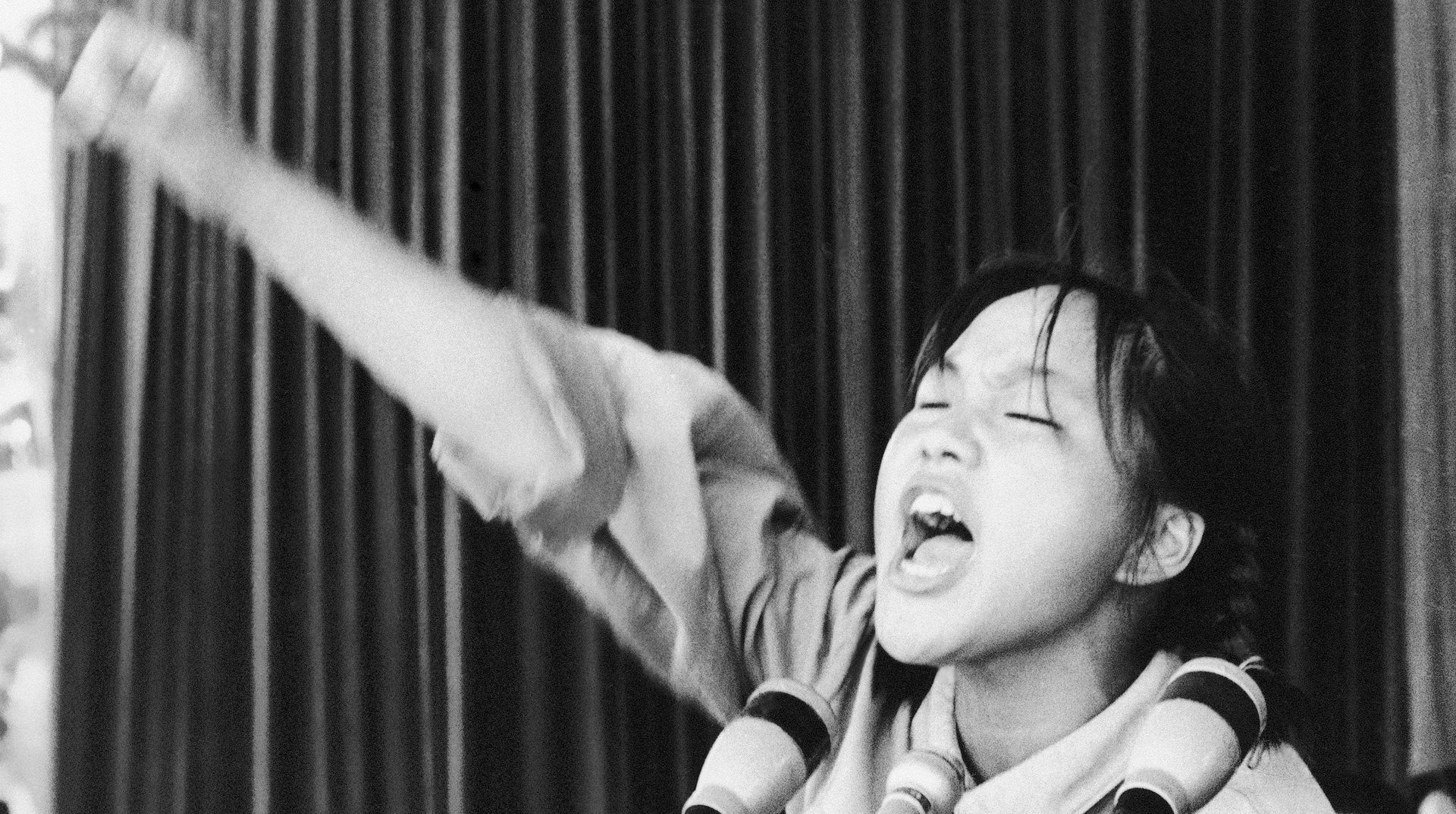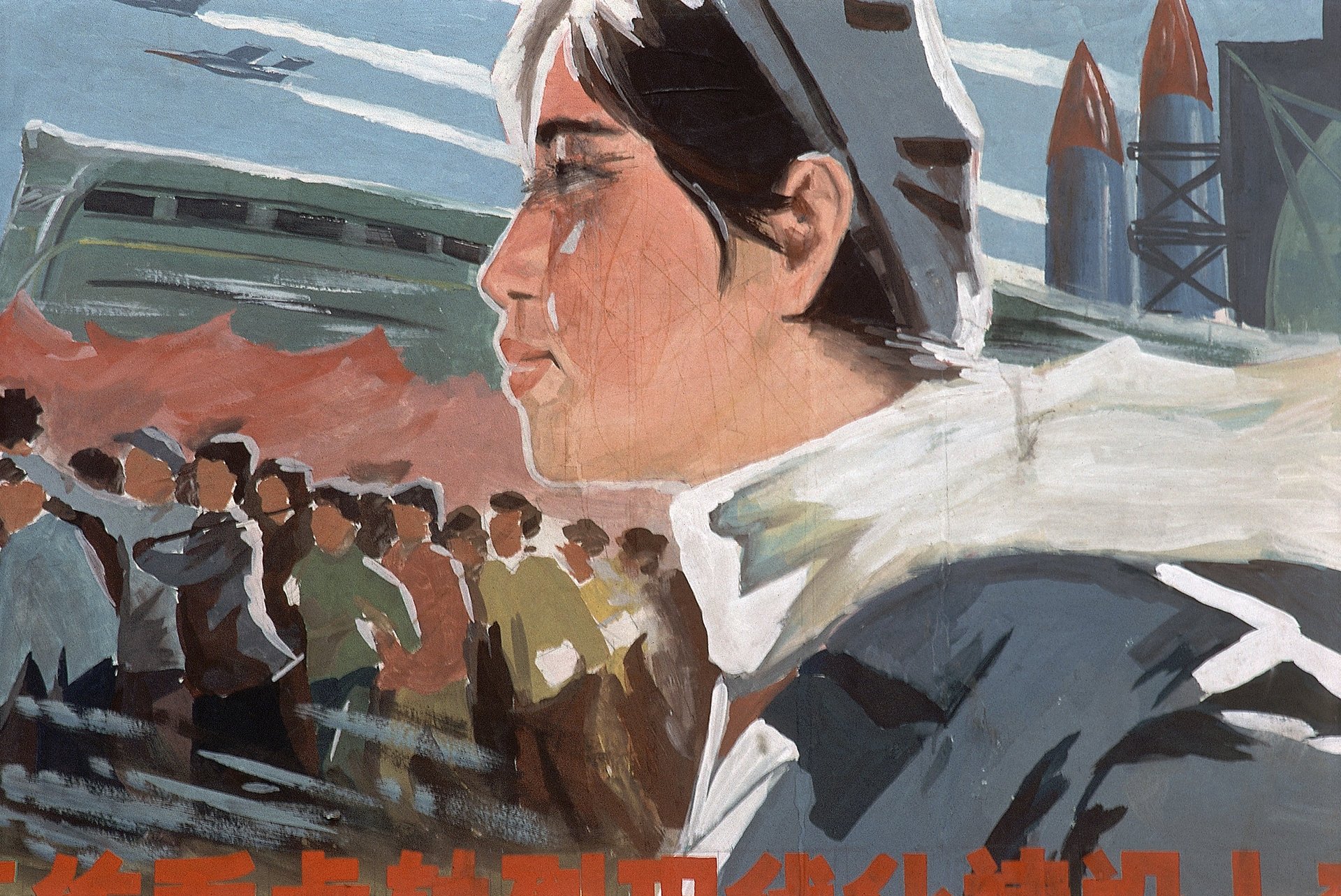Women deserve a place at the center of China’s revolutionary history
The political upheavals of China in the past two centuries are often told through the roles of men who instigated rebellions, fired guns, or ruled over the country. Rarely is the revolutionary history of China, however, considered from the point of view of the women involved.


The political upheavals of China in the past two centuries are often told through the roles of men who instigated rebellions, fired guns, or ruled over the country. Rarely is the revolutionary history of China, however, considered from the point of view of the women involved.
Women were in fact central to the tumultuous events that helped shaped modern China—for example, a cohort of teenage girls who were said to have magical powers featured in the anti-Western Boxer Uprising of the Qing Dynasty, fighting alongside male soldiers. Female labor was also crucial to the survival of the Chinese empire and later the Chinese states, whether it was reproductive labor or women’s willingness to work double shifts in order to sustain the grand industrial visions of Mao Zedong’s Communist state. Women of course also played a key role in China’s transition to a more capitalist system, as millions left behind their husbands and children to find work in factories.

This following excerpt was adapted from Gail Hershatter’s book Women and China’s Revolutions, published this month from Rowman & Littlefield Publishers. All rights reserved.
The 19th century ended with a series of dismal setbacks for Qing sovereignty. China lost a war with Japan in 1895 and ceded control of Taiwan to the victor. In the war’s wake, foreign powers scrambled for spheres of influence on Chinese soil, and Chinese commentators warned that they were threatening to “carve China up like a melon.”
The Boxer uprising of 1898-1900 began as a localized Shandong disturbance incited by flood and then drought, by weakened ties to the central state, and by foreign economic and missionary activities. It rapidly became a regional movement attacking missionaries, churches, Christian converts, and other establishments linked to the foreign powers. As the Boxers spread across North China, armed with spears and swords, their fighters claiming that their bodies were immune to foreign weapons, the Qing rulers decided to support them in their attempt to expel the foreigners.
Operating in parallel to the bands of male Boxer fighters were a small number of teenaged girls known as the Shining Red Lanterns. Like the Boxers, they were said to have magical powers, which they deployed to protect the male fighters. “The Boxers would fight down below,” recalled a former Boxer, “while the Red Lanterns would watch from above, appearing, suspended in the sky, no larger than a chicken’s egg.” From up in the air, it was said, they would throw swords to behead the enemy, send forth bolts of fire, and magically remove the screws from the enemy’s artillery. One account by a Chinese observer described their reception as they walked through the streets in the Tianjin area: “The people all burn incense and kneel in their presence; they call them female immortals and dare not look up at them. Even the Boxer bandits, when they encounter them, fall prostrate on their knees by the side of the road.” Decades after the Boxer movement, legends persisted about their daring exploits and magical feats. Notable among these stories were several features: The Red Lanterns supposedly did not bind their feet; they could ignite a building merely by shouting “Burn!”; they had healing powers; they could leap up to heaven, and from there they could reach Japan and reclaim the lands that Japan had stolen from China, putting their powers to a nationalist purpose.
But such female heroism was not available to all women. [Scholar] Paul Cohen argues that Red Lanterns, as teenagers who were not yet sexually active and perhaps had not yet reached the age of menarche, “were largely if not entirely free of the ritual uncleanness characteristic of adult women in China,” and that this enabled others to attribute magical powers to them. In contrast, adult women were regarded by the Boxers as sources of female pollution who could destroy Boxer magic. Women, especially if they were menstruating, were believed to undermine Boxer invulnerability, intentionally or unintentionally. This led to restrictions on the activities of ordinary women, including going to market, leaving their homes after dark, or splashing dirty water in their courtyards.
The Boxer siege of the foreign legations in the capital of Beijing in the summer of 1900 brought violent military retaliation from an alliance of eight foreign powers. This gave rise to a great deal of civilian suffering, particularly in the cities of Beijing and Tianjin, and again some of it took particular gendered forms. Contemporary reports recorded the grievances Beijing residents expressed about looting, killing of civilians, and rape, the last being variously attributed to Russian and French forces. War correspondent George Lynch reported, “A story has gone the round that when the French General was remonstrated with by his Allied colleagues about the frequent occurrence of disgraceful outrages upon women, he replied, ‘It is impossible to restrain the gallantry of the French soldier.’”
As in earlier conflicts, the imminent threat of rape provoked some women to commit suicide. “I was having a swim one evening,” Lynch reports of his march northward with the troops, “when my foot struck against something, and, looking round, I saw the yellow-skinned cheek and shoulder of a corpse drifting past me. It rather put me off bathing for a day or two. It was generally understood that many of the corpses of women were of those who had committed suicide.” Later in his account of the expedition, War of the Civilisations, Lynch observed,
News travels fast in China, and in advance of our march the people seemed to be thoroughly aware of the fate that probably awaited them. Although nearly the whole population cleared off before our advance, there were many, especially women, who could not get away, and who were unable to travel with their tiny, compressed feet, except in carts or on the backs of their servants. And it was principally these who, finally in the last extremity, committed suicide.
In Tongzhou on the eastern outskirts of Beijing, 570 women hanged or drowned themselves as the foreigners advanced on the city. Unlike the earlier women martyrs of the Taiping conflict, however, these women were not remembered by all as paragons of chaste virtue, for attitudes among some elite Chinese had begun to change. The future woman revolutionary He Xiangning regarded the women’s suicides as a national shame—one that need not have happened if men and women alike had concerned themselves with the fate of the nation before it arrived at their door in the form of a marauding foreign army. In her commentary, women’s virtue expressed through suicide was no longer a source of cultural cohesion. It was a sign of cultural trouble and a potential cause of national disintegration.
China’s 19th century crisis altered the lives of massive numbers of women. It also reshaped the ways that Chinese thinkers understood the proper practice of womanhood and its relationship to national strength. Neither the uneven effects of imperialism nor the emergent languages of reform and revolution can be fully understood without attention to gender. By the turn of the 20th century, chastity suicides as well as female infanticide, footbinding, the traffic in women, and a host of other problems were increasingly interpreted as symptoms of China’s weakness.